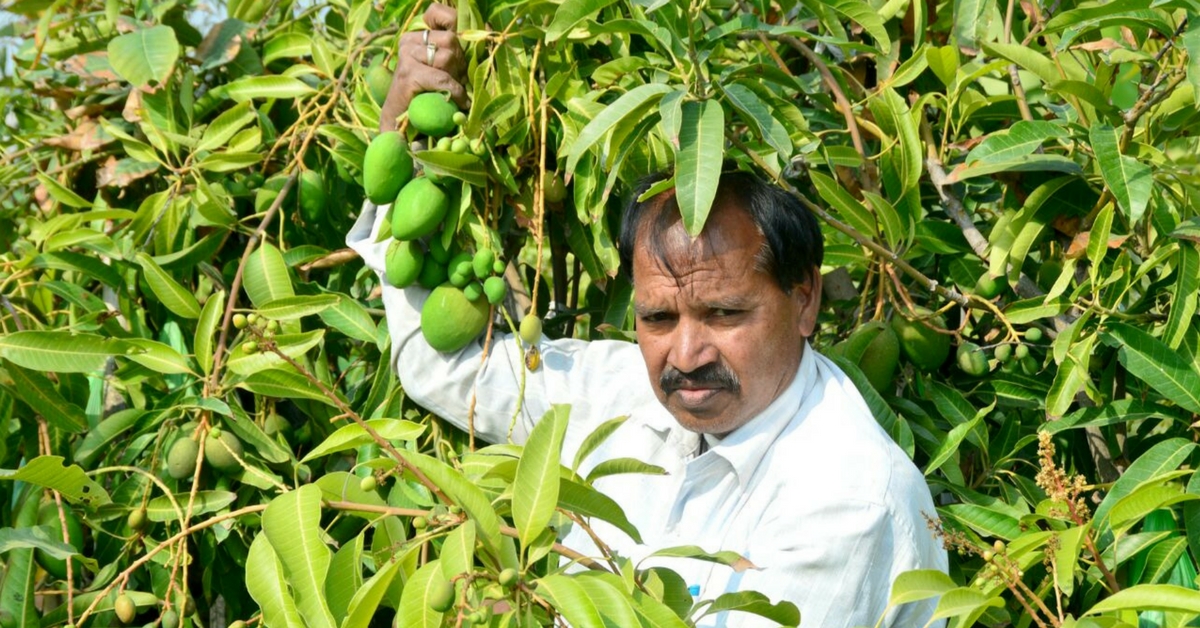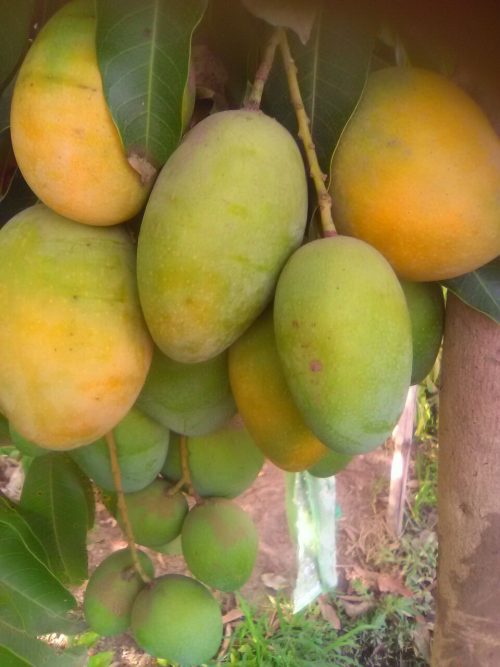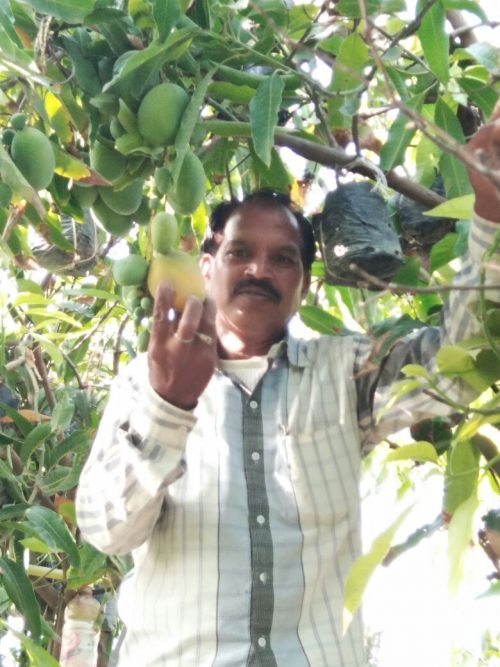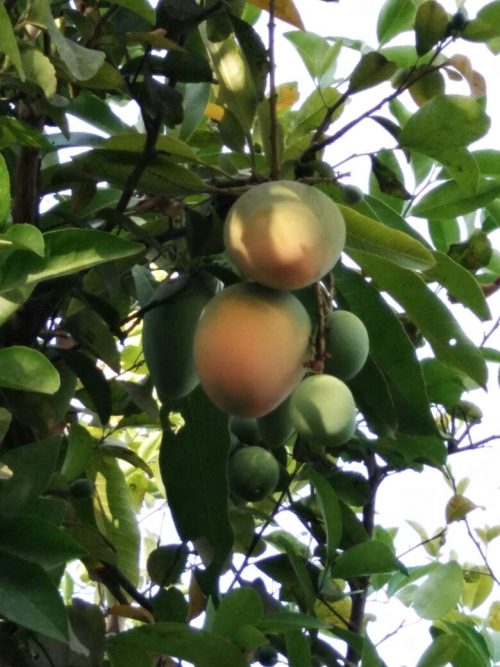Fresh Mangoes Three Times a Year? Meet The Farmer Who Created The Unique ‘Sadabahar’
Suman has sold over 800 plants so far and has been receiving calls for Sadabahar saplings from all over the world.

Intimately associated with the history of agriculture and civilisation in India, we have had a love affair with mangoes since long, but it was Hsüan-Tsang, the seventh-century Chinese traveller who brought our fascination for Mangifera Indica to the world’s notice.
A country which has 1,500 varieties of mangoes, as a nation, we get excited whenever a new aam or amba variety makes its appearance. We each have a different way of eating, peeling and slicing or making aam ras with milk and jaggery—the luscious and fragrant fruit is summer’s greatest gift.
The same is happening with ‘Sadabhar’, a mango which flowers thrice a year.

Developed by Shree Kishan Suman, a Kota-based horticulturist and farmer, Sadabahar is a recent entrant on the mango-sphere and has quite a few similarities with Alphonso. Mango growers the world over are making a beeline for this new variety of the ‘king of fruits’ to have in their orchards.
Many in the know are likely to confuse Sadabahar with ‘Baramasi’ or ‘Dofasla’, which flowers and fruits twice or thrice a year but the former stands out due to its table quality, its lack of fibre, shape and size—all akin to Alphonso.
Popular with the masses due to its adaptability, nutritive value, rich variety, delicious taste and excellent flavour, Indian mangoes rank first among the world’s mango producing countries, accounting for about 50% of the world’s mango production.
Also Read: 51 Types of Mango on One Tree! An Engineer-Turned-Farmer’s Unique Plan to Save Endangered Varieties
The word ‘mango’ comes from the Portuguese ‘manga’, which is probably derived from the Malayalam manga. It is believed that the Portuguese introduced vegetative propagation methods in India during the 15th century when they established trading outposts along the western coast of India. These were then used to clone superior mono-embryonic trees, like the Alphonso, named after the Portuguese general Afonso de Albuquerque.
The most important mango cultivars of India like Alphonso, Dashehari, Langra etc., are selections that were made at the time of Mughal Emperor Akbar (1542–1605 AD) and therefore, have been propagated vegetatively for several hundred years.
Fifty-two-year-old Suman of village Girdharpura, 15 kms from Kota, belongs to a family of farmers who used to grow rice and wheat but gave them up due to the fluctuating market rates.

In 1995, they started cultivating rose, mogra and mayurpankhi (thuja) and continued doing so for the next three years. During this period, he developed rose plants which yielded seven colours of rose in a single plant and made good returns.
“I thought if I could work with roses, why not with mangoes. I acquired mango stones of different varieties and nurtured them. When the saplings became big enough, I grafted them on rootstock,” recalls Suman, sitting among saplings of different sizes and ages, bearing flowers and fruits.
In 2000, he identified a mango tree in his orchard, which had bloomed in the three seasons viz. January-February, June-July and September-October. He prepared five grafted mango trees, using them as a scion. This tree had a good growth habit and had dark green leaves. Growing them for years, he found the mango trees immune to major diseases and common disorders.
Soon the word spread and one Sundaram Verma, a volunteer with Honey Bee Network, informed the National Innovation Foundation (NIF), the institutional space for grassroots technological innovators and outstanding traditional knowledge, about Suman’s innovation. “NIF asked me not to sell or gift Sadabahar saplings, and for 11 long years I followed their advice while it was grown by them at different places in the country to authenticate the veracity of my claims,” says Suman, who took about fifteen years to develop his variety.
But for Suman’s nursery-cum-orchard, Sadabhar yielded fruits in Kamal Hissaria’s two-acre farm near Aalniya Mata Mandir on Kota Jhalawar Road, 30 kms from Kota railway station.

“I gifted him 20 plants in 2012 and the trees have been yielding fruits. When the fruit ripens, the skin acquires orange colour, while the insides have a saffron hue,” says Suman.
Hissaria who runs a tea blending unit in Kota is among the few who can enjoy the delicious and sweet mangoes three times in a year, unlike others who have to wait for the summers to have their ‘king of fruits’.
In March 2017, Suman was conferred with the Farm Innovation Award during the 9th Biennial Grassroots Innovation and Outstanding Traditional Knowledge held at Rashtrapati Bhavan.
According to Hardev Choudhary, Innovation Officer, NIF, Sadabahar blooms throughout the year. “The fruits are sweeter in taste audit and developed as a dwarf variety which is suitable for kitchen gardening and can be grown in pots for some years. It has great potential, unlike the existing varieties, and due to its off-season availability, it is likely to benefit the growers immensely,” he says.
Perhaps the nation’s or in fact, the world’s only hybrid mango that flowers thrice a year, Sadabahar has been registered under the Protection of Plant Varieties and Farmers’ Rights Act as a farmers’ variety.
Will it be able to dethrone favourites like Alphonso, Langra or Dashehari? It’s too early to tell. Meanwhile, ICAR-Central Institute of Subtropical Horticulture (CISH), Lucknow, which has the world’s largest germplasm of mangoes in its field gene bank, has acquired the saplings of Sadabahar.
Work at CISH is on to determine factors such as preferred agri-climatic zone and soil quality for Sadabahar to prosper. Dr K K Srivastava, Principal Scientist, CISH, says, “We now have five plants of Sadabahar mangoes and are studying its performance. It will take us close to three to four years to arrive at any conclusion.”
But mango lovers are unwilling to wait. And ever since Suman’s mangoes were planted at Rashtrapati Bhavan, his phone has been continuously ringing.

So far, Suman has sold over 800 plants, available for Rs 1,000 each, to nurseries and individuals in Delhi, Rajasthan, Chattisgarh, Gujarat, Andhra Pradesh, Maharashtra, and Telangana. “I have even received inquiries for saplings from individuals in Nigeria, Pakistan, Kuwait, Iraq, UK, and the USA, but don’t know how to go about it,” shares Suman.
Mangoes take around five summers to yield fruits. Growers need to wait that long but they are not complaining, for Sadabahar is unlike other mango varieties. Isn’t that worth the wait!
You can contact Suman at 9829142509.
(Written by Hiren Bose & edited by Shruti Singhal)
Like this story? Or have something to share? Write to us: [email protected]
Connect with us on Facebook and Twitter.
NEW: Click here to get positive news on WhatsApp!
This story made me
- 97
- 121
- 89
- 167
Tell Us More
We bring stories straight from the heart of India, to inspire millions and create a wave of impact. Our positive movement is growing bigger everyday, and we would love for you to join it.
Please contribute whatever you can, every little penny helps our team in bringing you more stories that support dreams and spread hope.



















